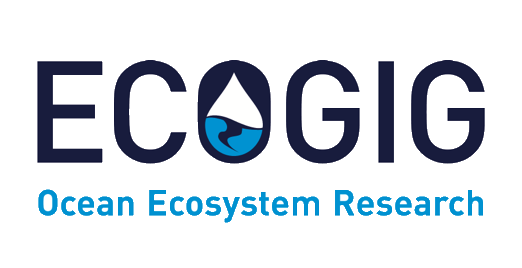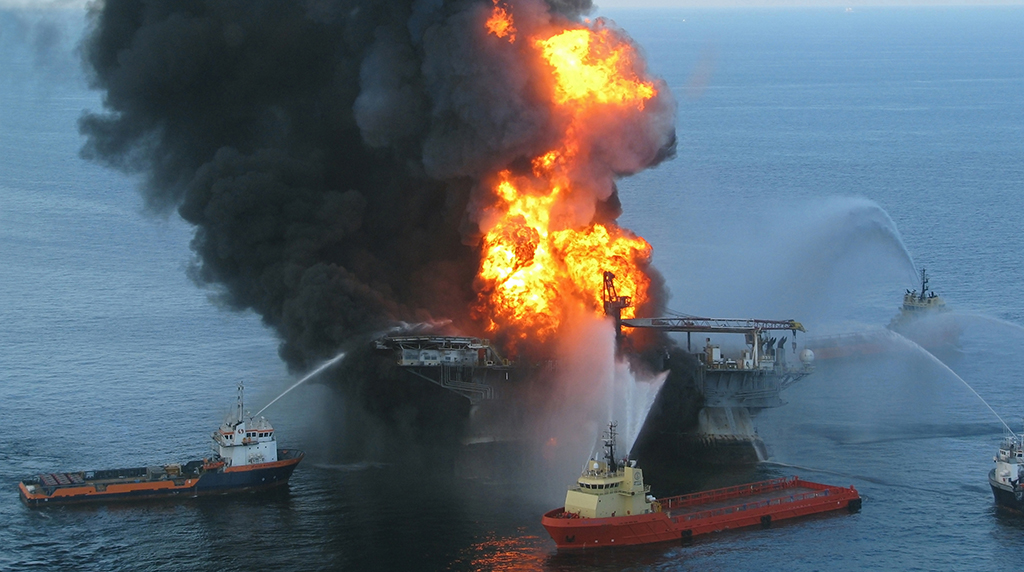May 28, 2020
This article is the first in a series featuring GoMRI-funded oil spill studies
April 2020 marked the 10th anniversary of the Deepwater Horizon incident and the tragic loss experienced by the families of the 11 people who died. Affected coastal communities continue to deal with overlapping stressors (economic downturns, hurricanes, harmful algal blooms), and marine life (such as dolphins and deep-sea corals) and coastal wetlands grapple with lingering impacts.
A silver lining from this tragedy is the advancement of science stemming from the Gulf of Mexico Research Initiative (GoMRI), an independent ten-year research program established with BP funds during Deepwater Horizon. GoMRI has sought to understand the spill’s impacts and provide research that contributes to improved future response and mitigation of oil spills through the funding of 269 projects that involved more than 4,000 people, including 1,114 scientists, 366 post-doctoral researchers, and 1,194 graduate students.
To-date, there are 1,400 publications (and counting) in peer-reviewed journals stemming from GoMRI-funded projects that address five themes related to the oil spill’s fate and impacts: Physical Ocean Processes, Chemical Evolution and Biological Degradation, Environmental Effects, Technology Developments, and Public Health.
Here are highlights from selected GoMRI-funded peer-reviewed publications related to advancements in knowledge about physical ocean processes that affect how an oil spill moves.
Surface and Near-Surface Currents
- Motions generated by small, fast, short-lived surface flows are a key contributor to local dispersion and transport of floating material.1
- Small-scale flows can disrupt larger scale flows, enough so that 20-50% of a simulated tracer entrained in a Gulf of Mexico eddy leaked out, crossed into surrounding areas, and followed flows of nearby eddies.2
- The pushing and pulling of Lagrangian coherent structures (LCSs) beneath the ocean’s surface created flow changes that governed the movement of Deepwater Horizon3
- The LCSs emerged a week before the development of an oil filament dubbed the “tiger tail,” so its formation could have been anticipated.4
- Two new circulation datasets exist: the upper 5 centimeters and upper 60 centimeters depth.5
- Currents in the upper centimeters of the ocean are likely to be more rapid and going in different directions than currents at one-meter depth.6
- Calculations using geo-rectified imagery from a Ship-Tethered Aerostat Remote Sensing System (STARSS) quantified small-scale and high-frequency surface dispersion in an open-ocean environment and provided some of the first statistically reliable estimates of diffusivity at the 3- 40 m scale.7
- Observations from the NOAA’s Global Drifter Program Array provided an improved near-surface (15 m depth) velocity climatology for the global ocean.8
Currents at Depth
- A deep Gulf of Mexico Lagrangian Geography (1500-2500 m) shows that circulation at-depth differs from the surface circulation recently inferred from satellite-tracked drifter trajectories.9
- This is in line with an independent experiment where a tracer released in the Gulf of Mexico at 1100 m deep and 150 m above the seafloor homogenized faster when released in the continental slope than when released in the open ocean.10
Ocean Front Dynamics
- As fronts sharpen, long and narrow features form abrupt temperature and salinity changes. Strong surface convergence causes buoyant material to accumulate, and downwelling pulls clustered material beneath the surface.11
- Smaller-scale features that prompt stronger surface divergence are the dominate driver of initial material clustering; then, larger-scale processes drive continued clustering.12
- Floating bamboo plates released near a front quickly clustered in narrow parallel convergence zones (known as windrows or streaks), which were initially 15 meters apart, then widened to 40 meters after 20 minutes and to 50 meters over 60 minutes.13
- Drifters released near a front had an initial distribution of 25 km diameter. Within a week, some converged into a 60 m wide region before slowing dispersing, and others spread over a 100 km wide area while intermittently being concentrated into a small fraction of this region.14
- Dissipation at a river plume front’s edge was four orders of magnitude larger than beneath it and accounted for ~60% of the plume mixing near the coast.15
- Fronts created three transport pathways near the Taylor Energy site, trapping and directing floating material to the west or east of the Mississippi River Delta and offshore, toward the Gulf interior. 16
- A northern Gulf of Mexico model simulation, in tandem with oil slick observations, showed that the Mississippi River plume created rapidly changing circulation patterns and fronts that influenced the direction of Deepwater Horizon oil, guiding some oil towards the Louisiana-Texas shelf and directing some oil away from the Mississippi-Alabama-Florida shelf. 17
- An analytic method using perturbation theory can account for effects from turbulent fluxes on frontal formation, including halting and enhancing frontogenesis.18
Interactions of Currents
- A cross-slope movement of water masses in the De Soto Canyon region is linked to the Loop Current’s interaction with the southern West Florida Shelf, where material can move up and down the slope (range of over 200 m). Downwelling is typically when the Loop Current impinges on the West Florida Shelf slope.19
- The West Florida Shelf experienced a strong and persistent upwelling period after Deepwater Horizon, and tracer simulations suggest that Deepwater Horizon oil beneath the surface may have permeated the entire west Florida shelf region where reef fish had skin lesions and oil compounds in livers.20
- Gulf-wide circulation disbursed and redistributed the methanotrophic biomass bloom associated with the Deepwater Horizon oil plume, and perpetuated elevated methane oxidation for several years.21
- Recurrent Lagrangian circulations interact with the Loop Current and western Gulf of Mexico.22
- An artificial neural network can characterize the Loop Current system,23 and predict Loop Current variations and its eddy shedding process for a 4-6-week period.24
- Currents near Cuba influence the Gulf Stream modulations in the Straits of Florida,25 and Cuban oil explorations might affect northern Gulf of Mexico waters if there were a spill in the Straits.26
- Submesoscale ocean dynamics are characterized by dispersion that is locally anisotropic (different in different directions) and inhomogeneous (different at different locations), while classic assumptions of isotropy and homogeneity (uniform dispersion in all directions and at all locations) only hold for averages over multiple measurements and over time scales beyond a week.27
Coastal and Deep-Water Connections
- Offshore waters with distinct riverine properties from the northern to the southern Gulf of Mexico and the Florida Straits provide insights on the connectivity of coastal areas and the deep basin interior.28
- Near the De Soto Canyon, export from the shelf is larger than vice-versa and is more uniformly distributed along the shelf break. Import onto the shelf favors a region just east of the Mississippi Delta, which is consistent with onshore transport of Deepwater Horizon29
- Simulations suggest that the overall connectivity of the shelf with the coastline is similar in the winter and summer, though it extends more offshore in Texas in summer, with seasonal variability in coastal subsets (Galveston and Port Aransas).30
- Recurrent mesoscale Lagrangian transport patterns can act together as a barrier to floating material moving to coastal areas.31
Estuarine and Bay Flows
- Measurements of upwelling and downwelling in Mobile Bay showed that it took ~5 days for an offshore cold-water mass to travel the 48-km estuary length, which drove a 7° C temperature swing over a 17-day period. Stratification and subtidal circulation affected estuarine changes in temperature, salinity, and dissolved oxygen. The shipping channel had the largest changes, reflecting its importance as a facilitating pathway, and has implications for other coastal areas with deep shipping channels.32
- A buoyant discharge from Mobile Bay created a bulge region with anticyclonic circulation, and low wind forcing influenced the plume’s structure even during large outflow conditions.33
- A high-tide front at an estuary in Destin, Florida transported buoyant material into the estuary throughout the water column, and a low tide front moved material seaward near the surface, which could prevent buoyant material from entering an estuary during a tidal cycle. After a tidal cycle, water density gradients were the main drivers of residual flows.”34
- Galveston Bay simulations provided calculations of transport timescales that indicate how long an oil spill release will persist within different parts of the estuary. These results are generalizable to other coastal barrier-island lagoon-type estuaries35
Currents, Sinking Particles, and Sediment
- Small-scale convergence and divergence processes and cross-shore transport of riverine inputs can affect the speed and trajectory of sinking particles that could interact with suspended oil in offshore waters. Mesoscale eddies and fronts influence riverine water content and nutrient influx, and submesoscale circulations accelerate particle descent, transporting sinking particles laterally from afar and causing them to reach the bottom faster than by their sinking speeds alone.36
- The size, settling velocity, and mass concentration of sediment flocs in the water column are influenced by wave-driven Langmuir turbulence and breaking waves, as the two dynamical processes suspend flocs and alter the rate of floc aggregation and breakup.37
- Hurricane Isaac in 2012 likely led to a near-bed lateral transport of sedimented oil and associated substances after Deepwater Horizon.38
- Hydrodynamic forces, including waves stirring up sediment in shallow water, can cause sediment particles to act as projectiles that penetrate oil droplets.39
- Increased particle concentration in the swash zone (the turbulent water layer that washes onto shores) could increase the oil-particle interaction process.40
Oil Plume Dynamics and Ocean Flows
- The Earth’s rotation influences near-field swirl speeds, which can affect the structure and magnitude of evolving hydrocarbon plumes.41
- Rotation alters dynamic balances within the plume leading to the encroachment of the trapping height on the source and an increase in turbulent dispersion in the near field. System rotation produces a sustained, robust, anticyclonic precession of the plume core.42
- Large eddy simulations suggest that swells can lead to oil plumes that are shallower or deeper than when there are no swells, affecting the ocean mixed layer and mean oil transport.43
- Estimating the effect of waves on the transport and spreading of oil droplets at sea should also include the buoyancy of oil because without oil buoyancy, the spreading coefficient for the oil plume would be overestimated.44
- Two competing forces on rising oil from the blowout influenced the diverse oil slick patterns observed during Deepwater Horizon: Langmuir cells caused downwelling and dilution and buoyant oil droplets inhibited dilution.45
- Oil plumes drifting beneath the ocean’s surface can change the radiative transfer (warms the ocean) within the water column, which in turn can affect ocean circulation.46
References
- 1. Poje, A. C.; Özgökmen, T. M.; Lipphardt, B. L.; Haus, B. K.; Ryan, E. H.; Haza, A. C.; Jacobs, G. A.; Reniers, A. J. H. M.; Olascoaga, M. J.; Novelli, G.; Griffa, A.; Beron-Vera, F. J.; Chen, S. S.; Coelho, E.; Hogan, P. J.; Kirwan, A. D.; Huntley, H. S.; Mariano, A. J. Submesoscale dispersion in the vicinity of the Deepwater Horizon spill, Proceedings of the National Academy of Sciences Sep 2014, 111 (35) 12693-12698; https://DOI.org/10.1073/pnas.1402452111 See associated story Study Shows Drifter Data on Surface Currents Critical to Predict Pollutant Transport
- 2. Haza, A. C.; Özgökmen, T. M.; Hogan, P. Impact of submesoscales on surface material distribution in a Gulf of Mexico mesoscale eddy, Ocean Modelling, Volume 107, 2016, Pages 28-47, ISSN 1463-5003, https://doi.org/10.1016/j.ocemod.2016.10.002. See associated story Study Finds Small-Scale Flows Alter Transport Pathways on the Ocean’s Surface
- 3. Olascoaga, M. J.; Haller. G. Forecasting sudden changes in environmental pollution patterns Proceedings of the National Academy of Sciences Mar 2012, https://DOI.org/10.1073/pnas.1118574109 See associated story Study Presents Effective Method for High-Precision Flow Forecasts in the Gulf
- 4. Olascoaga, M. J.; Beron‐Vera, F. J.; Haller, G.; Triñanes, J.; Iskandarani, M.; Coelho, E. F.; Haus, B. K.; Huntley, H. S.; Jacobs, G.; Kirwan Jr, A. D.; Lipphardt Jr, B. L.; Özgökmen, T. M.; Reniers, A. J. H. M.; Valle‐Levinson, A. (2013), Drifter motion in the Gulf of Mexico constrained by altimetric Lagrangian coherent structures, Res. Lett., 40, 6171– 6175, https://doi.org/10.1002/2013GL058624.
- 5. Haza, A.C.; D’Asaro, E.; H. Chen, C. S.; Curcic, M.; Guigand, C.; Huntley, H. S.; Jacobs, G.; Novelli, G.; Özgökmen, T. M.; Poje, A. C.; Ryan, E.; Shcherbina, A. 2018: Drogue-Loss Detection for Surface Drifters during the Lagrangian Submesoscale Experiment (LASER). Atmos. Oceanic Technol., 35, 705–725, https://doi.org/10.1175/JTECH-D-17-0143.1 See associated story Study Detects Drifter Drogue Loss and Produces More Accurate Surface Ocean Transport Data
- 6. Laxague, N. J. M.; Özgökmen, T. M.; Haus, B. K.; Novelli, G.; Shcherbina, A.; Sutherland, P.; Guigand, C.M.; Lund, B.; Mehta, S.; Alday, M.; Molemaker, J. (2018). Observations of near‐surface current shear help describe oceanic oil and plastic transport. Geophysical Research Letters, 45, 245– 249. https://doi.org/10.1002/2017GL075891 See associated story Study Finds Currents One Centimeter Below Ocean’s Surface Greatly Affect Material Transport
- 7. D. F.; Özgökmen, T. M.; Guillaume, N.; Cedric, G.; Chang, H.; Fox-Kemper, B.; Mensa, J.; Sanchit, M.; Erick, F.; Huntley, H.; Kirwan, A. D.; Berta, M.; Rebozo, M.; Milan, C.; Ryan, E.; Lund, B.; Haus, B.; Molemaker, J.; Hunt, C.; Chen, S.; Bracken, L; Jochen, H. Surface Ocean Dispersion Observations From the Ship-Tethered Aerostat Remote Sensing System, Frontiers in Marine Science Volume 5, 2018, 479, https://doi.org/10.3389/fmars.2018.00479 See associated story Study Tests STARRS Imaging of Short-Lived Small-Scale Dispersion on Ocean’s Surface
- 8. Laurindo, L. C.; Mariano, A. J.; Lumpkin, R.; An improved near-surface velocity climatology for the global ocean from drifter observations, Deep Sea Research Part I: Oceanographic Research Papers, Volume 124, 2017, Pages 73-92, https://doi.org/10.1016/j.dsr.2017.04.009 See associated story Study Improves Drifter-Based Estimates of Near-Surface Ocean Currents
- 9. Miron, P.; Beron-Vera, F.J.; Olascoaga, M.J.; Froyland, G.; Pérez-Brunius, P.; Sheinbaum, J. 2019: Lagrangian Geography of the Deep Gulf of Mexico. Phys. Oceanogr., 49, 269–290, https://doi.org/10.1175/JPO-D-18-0073.1
- 10. Ledwell, J. R.; He, R.; Xue, Z.; DiMarco, S. F.; Spencer, L.; Chapman, P. (2016), Dispersion of a tracer in the deep Gulf of Mexico, Geophys. Res. Oceans, 121, 1110– 1132, https://doi.org/10.1002/2015JC011405
- 11. Taylor, J.R. 2018: Accumulation and Subduction of Buoyant Material at Submesoscale Fronts. J. Phys. Oceanogr., 48, 1233–1241, https://doi.org/10.1175/JPO-D-17-0269.1 See associated story Study Provides Insights into How Floating Material Moves on the Ocean
- 12. Jacobs, G. A.; Huntley, H. S.; Kirwan, A. D.; Lipphardt, B. L.; Campbell, T.; Smith, T.; Edwards, K.; Bartels, B. (2016), Ocean processes underlying surface clustering, Geophys. Res. Oceans, 121, 180– 197, https://doi.org/10.1002/2015JC011140 See associated story Study Identifies Ocean Processes That Drive Surface Material Clustering
- 13. Chang, H.; Huntley, H. S.; A.D. Jr.; Carlson, D. F.; Mensa, J. A.; Mehta, S.; Novelli, G.; Özgökmen, T. M.; Fox-Kemper, B.; Pearson, B.; Pearson, J.; Harcourt, R. R.; Poje, A. C. 2019: Small-Scale Dispersion in the Presence of Langmuir Circulation. Phys. Oceanogr., 49, 3069–3085, https://doi.org/10.1175/JPO-D-19-0107.1 See associated story Study Shows that Floating Bamboo Plates Capture Strength of Small-Scale Ocean Currents
- 14. D’Asaro, E. A.; Shcherbina, A. Y.; Klymak, J. M.; Molemaker, J.; Novelli, G.; Guigand, C. M.; Haza, A. C.; Haus, B. K.; Ryan, E. H.; Jacobs, G. A.; Huntley, H. S.; Laxague, N. J. M.; Chen, S.; Judt, F.; McWilliams, J. C.; Barkan, R.; Kirwan, A. D.; Poje, A. C.; Özgökmen, T. M. Ocean convergence and the dispersion of flotsam, Proceedings of the National Academy of Sciences Feb 2018, 115 (6) 1162-1167; https://doil.org/10.1073/pnas.1718453115 See associated story Study Finds Small Scale Ocean Currents Cause Clustering of Floating Material
- 15. Huguenard, K. D.; Bogucki, D. J.; Ortiz‐Suslow, D. G.; Laxague, N. J. M.; MacMahan, J. H.; Özgökmen, T. M.; Haus, B. K.; Reniers, A. J. H. M.; Hargrove, J.; Soloviev, A. V.; Graber, H. (2016), On the nature of the frontal zone of the Choctawhatchee Bay plume in the Gulf of Mexico, Geophys. Res. Oceans, 121, 1322– 1345, https://doi.org/10.1002/2015JC010988 See associated story Study Characterizes River Plume Mixing Processes in Coastal Waters
- 16. Androulidakis, Y.; Kourafalou, V.; Özgökmen, T.; Garcia‐Pineda, O.; Lund, B.; Le Hénaff, M.; Hu, C.; Haus, B. K.; Novelli, G.; Guigand, C.; Kang, H.; Hole, L.; Horstmann, J. (2018). Influence of river‐induced fronts on hydrocarbon transport: A multiplatform observational study. Journal of Geophysical Research: Oceans, 123, 3259‐ 3285. https://doi.org/10.1029/2017JC013514 see associated story Study Documents How Riverine Fronts Influence Oil Transport Pathways
- 17. Kourafalou, V. H.; Androulidakis, Y. S. (2013), Influence of Mississippi River induced circulation on the Deepwater Horizon oil spill transport, Geophys. Res. Oceans, 118, 3823– 3842, https://doi.org/10.1002/jgrc.20272 See associated story Study Demonstrates Substantial Role of Mississippi River in Oil Transport
- 18. Bodner, A.; Fox-Kemper, B.; Van Roekel, L.; McWilliams, J.; Sullivan, P. (2019). A perturbation approach to understanding the effects of turbulence on frontogenesis. Journal of Fluid Mechanics, 883, A25. https://doi.org/10.1017/jfm.2019.804
- 19. Nguyen, T‐T; Morey, S. L.; Dukhovskoy, D. S.; and Chassignet, E. P. (2015), Nonlocal impacts of the Loop Current on cross‐slope near‐bottom flow in the northeastern Gulf of Mexico. Res. Lett., 42, 2926– 2933. https://doi.org/10.1002/2015GL063304
- 20. Weisberg, R. H; Zheng, L.; Liu, Y.; Murawski, S.; Hu, C. Paul, J. Did Deepwater Horizon hydrocarbons transit to the west Florida continental shelf?, Deep Sea Research Part II: Topical Studies in Oceanography, Volume 129, 2016, Pages 259-272, https://doi.org/10.1016/j.dsr2.2014.02.002
- 21. Rogener, M.K.; Bracco, A.; Hunter, K.S.; Saxton, M.A.; Joye, S.B., 2018. Long-term impact of the Deepwater Horizon oil well blowout on methane oxidation dynamics in the northern Gulf of Mexico. Elem Sci Anth, 6(1), p.73. http://doi.org/10.1525/elementa.332 See associated story Study Characterizes Ecosystem-Scale Methane Dynamics Following Deepwater Horizon
- 22. Duran, R.; Beron-Vera, F.J.; Olascoaga, M.J. Extracting quasi-steady Lagrangian transport patterns from the ocean circulation: An application to the Gulf of Mexico. Sci Rep 8, 5218 (2018). https://doi.org/10.1038/s41598-018-23121-y
- 23. Meza‐Padilla, R.; Enriquez, C.; Liu, Y.; Appendini, C. M. (2019). Ocean circulation in the western Gulf of Mexico using self‐organizing maps. Journal of Geophysical Research: Oceans, 124, 4152– 4167. https://doi.org/10.1029/2018JC014377
- 24. Zeng, X.; Li, Y.; He, R. 2015: Predictability of the Loop Current Variation and Eddy Shedding Process in the Gulf of Mexico Using an Artificial Neural Network Approach. Atmos. Oceanic Technol., 32, 1098–1111, https://doi.org/10.1175/JTECH-D-14-00176.1
- 25. Kourafalou, V.; Androulidakis, Y.; Le Hénaff, M.; Kang, H.S. (2017). The dynamics of Cuba Anticyclones (CubANs) and interaction with the Loop Current/Florida Current system. Journal of Geophysical Research: Oceans, 122, 7897– 7923, https://doi.org/10.1002/2017JC012928 see associated story Study Explains How Large Rotating Currents Near Cuba Influence the Gulf Stream
- 26. Drouin, K. L.; Mariano, A. J.; Ryan, E. H.; Laurindo, L. C. Lagrangian simulation of oil trajectories in the Florida Straits, Marine Pollution Bulletin, Volume 140, 2019, Pages 204-218, https://doi.org/10.1016/j.marpolbul.2019.01.031
- 27. Huntley, H. S.; Lipphardt, B. L. Jr.; Kirwan, A. D. Jr. (2019). Anisotropy and inhomogeneity in drifter dispersion. Journal of Geophysical Research: Oceans, 124, 8667– 8682. https://doi.org/10.1029/2019JC015179
- 28. Androulidakis, Y.; Kourafalou, V.; Le Hénaff, M.; Kang, H. S.; Sutton, T.; Chen, S.; Ntaganou, N. (2019). Offshore spreading of Mississippi waters: Pathways and vertical structure under eddy influence. Journal of Geophysical Research: Oceans, 124, 5952– 5978. https://doi.org/10.1029/2018JC014661
- 29. Hamilton, P.; Speer, K.; Snyder, R.; Wienders, N.; Leben, R. R. Shelf break exchange events near the De Soto Canyon, Continental Shelf Research, Volume 110, 2015, Pages 25-38, https://doi.org/10.1016/j.csr.2015.09.021
- 30. Thyng, K. M.; Hetland, R. D. Texas and Louisiana coastal vulnerability and shelf connectivity, Marine Pollution Bulletin, Volume 116, Issues 1–2, 2017, Pages 226-233, https://doi.org/10.1016/j.marpolbul.2016.12.074
- 31. Gough, M.K.; Beron-Vera, F. J.; Olascoaga, M. J.; Sheinbaum, J.; Jouanno, J; Duran, R. 2019: Persistent Lagrangian Transport Patterns in the Northwestern Gulf of Mexico. Phys. Oceanogr., 49, 353–367, https://doi.org/10.1175/JPO-D-17-0207.1
- 32. Coogan, J.; Dzwonkowski, B.; Lehrter, J. (2019). Effects of coastal upwelling and downwelling on hydrographic variability and dissolved oxygen in Mobile Bay. Journal of Geophysical Research: Oceans, 124, 791– 806. https://doi.org/10.1029/2018JC014592
- 33. Dzwonkowski, B.; Park, K.; Collini, R. (2015), The coupled estuarine‐shelf response of a river‐dominated system during the transition from low to high discharge, Geophys. Res. Oceans, 120, 6145– 6163, https://doi.org/10.1002/2015JC010714
- 34. Valle-Levinson, A.; Huguenard, K.; Ross, L.; Branyon, J.; MacMahan, J.; Reniers, A. Tidal and nontidal exchange at a subtropical inlet: Destin Inlet, Northwest Florida, Estuarine, Coastal and Shelf Science, Volume 155, 2015, Pages 137-147, https://doi.org/10.1016/j.ecss.2015.01.020
- 35. Rayson, M. D.; Gross, E. S.; Hetland, R. D.; Fringer, O. B. (2016), Time scales in Galveston Bay: An unsteady estuary, Geophys. Res. Oceans, 121, 2268– 2285, https://doi.org/10.1002/2015JC011181
- 36. Liu, G.; Bracco, A.; Passow, U., 2018. The influence of mesoscale and submesoscale circulation on sinking particles in the northern Gulf of Mexico. Elem Sci Anth, 6(1), p.36. DOI: http://doi.org/10.1525/elementa.292 See associated story Study Simulates How Large and Small Circulations Influence Sinking Marine Particles
- 37. Liu, J.; Liang, J.‐H.; Xu, K.; Chen, Q.; Chen, Q.; Ozdemir, C. E. (2019). Modeling sediment flocculation in langmuir turbulence. Journal of Geophysical Research: Oceans, 124, 7883– 7907. https://doi.org/10.1029/2019JC015197
- 38. Ziervogel, K.; Dike, C.; Asper, V.; Montoya, J.; Battles, J.; D׳souza, N.; Passow, U.; Diercks, A.; Esch, M.; Joye, S.; Dewald, C.; Arnosti, C. Enhanced particle fluxes and heterotrophic bacterial activities in Gulf of Mexico bottom waters following storm-induced sediment resuspension, Deep Sea Research Part II: Topical Studies in Oceanography, Volume 129, 2016, Pages 77-88, https://doi.org/10.1016/j.dsr2.2015.06.017 see associated story Study Describes How Hurricane Isaac Stirred Up a Marine Snow Storm
- 39. Zhao, L.; Boufadel, M. C.; Katz, J.; Haspel, G.; Lee, K.; King, T.; Robinson, B. A New Mechanism of Sediment Attachment to Oil in Turbulent Flows: Projectile Particles, Environmental Science & Technology 2017 51 (19), 11020-11028 https://doi.org/10.1021/acs.est.7b02032 See associated story Study Reveals New Mechanism for Particle Attachment to Oil Droplets
- 40. Zhao, L.; Boufadel, M. C.; Geng, X.; Lee, K.; King, T.; Robinson, B.; Fitzpatrick, F. A-DROP: A predictive model for the formation of oil particle aggregates (OPAs), Marine Pollution Bulletin, Volume 106, Issues 1–2, 2016, Pages 245-259, https://doi.org/10.1016/j.marpolbul.2016.02.057
- 41. Fabregat, A.; Deremble, B.; Wienders, N.; Stroman, A.; Poje, A.; Özgökmen, T. M.; Dewar, W. K. Rotating 2d point source plume models with application to Deepwater Horizon, Ocean Modelling, Volume 119, 2017, Pages 118-135, https://doi.org/10.1016/j.ocemod.2017.10.005 See associated story Study Compares 2D and 3D Model Simulations of Oil Plume Behavior
- 42. Fabregat A.; Poje, A. C.; Özgökmen, T. M.; Dewar, W. K. (2017), Numerical simulations of rotating bubble plumes in stratified environments, Geophys. Res. Oceans, 122, 6795– 6813, https://doi.org/10.1002/2017JC013110
- 43. Chen, B.; Yang, D.; Meneveau, C.; Chamecki, M. (2016), Effects of swell on transport and dispersion of oil plumes within the ocean mixed layer, Geophys. Res. Oceans, 121, 3564– 3578, https://doi.org/10.1002/2015JC011380
- 44. Geng, X.; Boufadel, M. C.; Ozgokmen, T.; King, T.; Lee, K.; Lu, Y.; Zhao, L. Oil droplets transport due to irregular waves: Development of large-scale spreading coefficients, Marine Pollution Bulletin, Volume 104, Issues 1–2, 2016, Pages 279-289, https://doi.org/10.1016/j.marpolbul.2016.01.007
- 45. Yang, D.; Chamecki, M.; Meneveau, C. (2014), Inhibition of oil plume dilution in Langmuir ocean circulation, Res. Lett., 41, 1632– 1638, https://doi.org/10.1002/2014GL059284
- 46. Xiao, S.; Yang, D. Effect of oil plumes on upper-ocean radiative transfer — A numerical study, Ocean Modelling, Volume 145, 2020, 101522, https://doi.org/10.1016/j.ocemod.2019.101522
This article was written by Nilde Maggie Dannreuther and originally appeared online here. Contact maggied@ngi.msstate.edu with questions or comments.
************
The Gulf of Mexico Research Initiative (GoMRI) is a 10-year independent research program established to study the effect, and the potential associated impact, of hydrocarbon releases on the environment and public health, as well as to develop improved spill mitigation, oil detection, characterization and remediation technologies. An independent and academic 20-member Research Board makes the funding and research direction decisions to ensure the intellectual quality, effectiveness and academic independence of the GoMRI research. All research data, findings and publications will be made publicly available. The program was established through a $500 million financial commitment from BP. For more information, visit https://gulfresearchinitiative.org/.


















 back to top
back to top